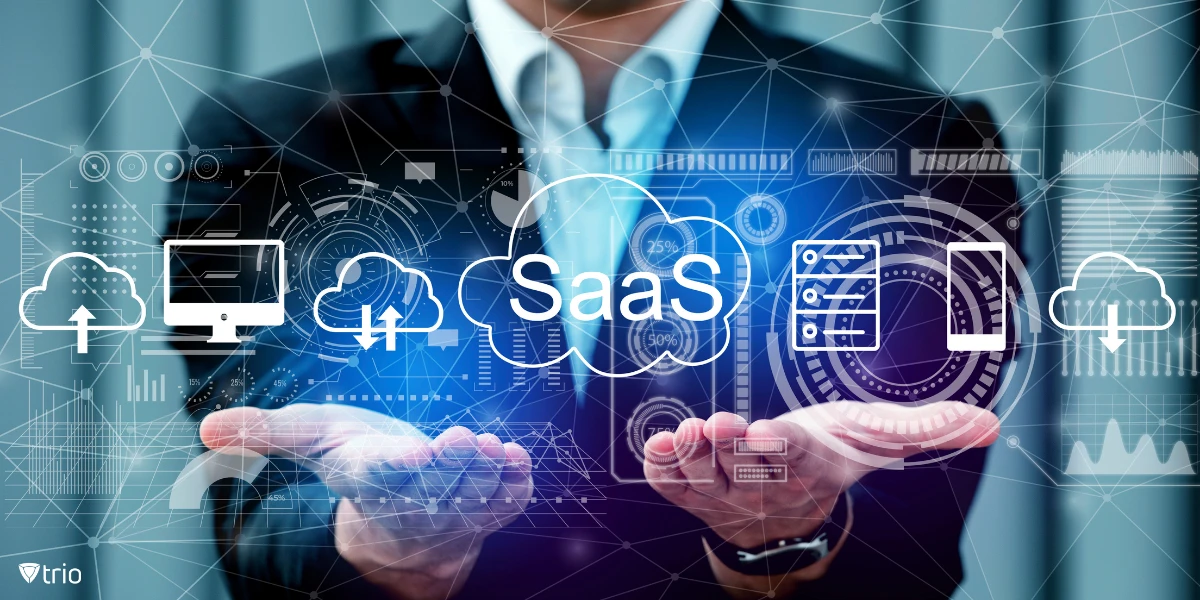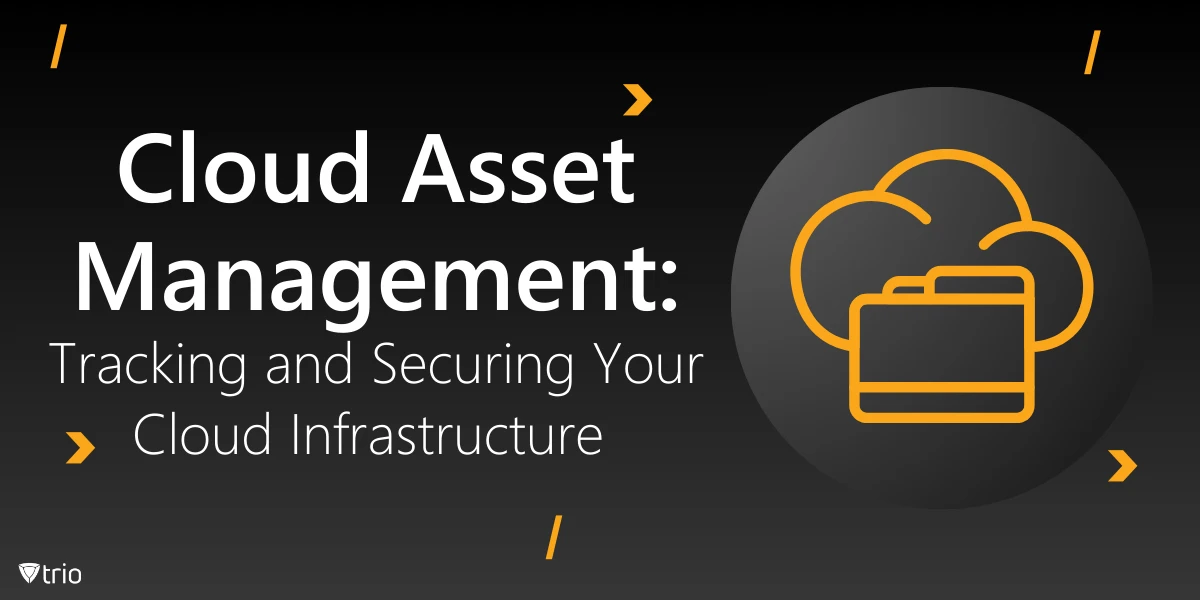Organizations are increasingly relying on cloud infrastructure to drive their operations and fuel innovation. As businesses migrate more workloads to the cloud and adopt multi-cloud strategies, the need for effective management of cloud-based resources has become paramount. Enter cloud asset management – a critical discipline that enables organizations to track, optimize, and secure their cloud infrastructure efficiently.
Cloud asset management encompasses the processes and tools used to inventory, monitor, and control cloud-based resources across an organization's entire IT ecosystem. This comprehensive approach ensures visibility into all cloud assets, from virtual machines and storage to software licenses and networking components. By implementing robust cloud asset management practices, businesses can enhance operational efficiency, reduce costs, strengthen security postures, and maintain compliance with regulatory requirements.
As we delve deeper into the world of cloud asset management, we'll explore its key components, benefits, best practices, and the tools available to help organizations navigate this complex landscape. Whether you're just beginning your cloud journey or looking to optimize your existing cloud infrastructure, understanding the nuances of cloud asset management is crucial for maximizing the value of your cloud investments.
Understanding Cloud Asset Management
Cloud asset management is a multifaceted discipline that involves tracking and optimizing the use of cloud-based resources throughout their lifecycle. It encompasses a wide range of activities, from initial procurement and deployment to ongoing maintenance and eventual decommissioning. At its core, cloud asset management aims to provide organizations with a comprehensive view of their cloud infrastructure, enabling them to make informed decisions about resource allocation, cost optimization, and security.
Defining Cloud Asset Management
In essence, cloud asset management refers to the systematic approach of identifying, cataloging, and managing all cloud-based resources within an organization's IT environment. This includes both tangible and intangible assets, such as:
- Virtual machines and containers
- Storage volumes and databases
- Networking components (e.g., load balancers, firewalls)
- Software licenses and applications
- APIs and microservices
- Data and intellectual property
By maintaining an up-to-date inventory of these assets, organizations can gain better control over their cloud infrastructure, reduce waste, and ensure compliance with internal policies and external regulations.
The Evolution of Asset Management in the Cloud Era
Traditional asset management practices have undergone a significant transformation with the advent of cloud computing. In the past, IT departments primarily focused on managing physical hardware and on-premises software installations. However, the shift to cloud-based services has introduced new challenges and complexities:
- Dynamic provisioning: Cloud resources can be spun up and down rapidly, making it difficult to maintain an accurate inventory.
- Multi-cloud environments: Organizations often use multiple cloud providers, adding complexity to asset tracking and management.
- Shared responsibility: Cloud providers and customers share responsibility for security and compliance, requiring clear delineation of duties.
- Cost optimization: The pay-as-you-go model of cloud computing necessitates continuous monitoring and optimization of resource usage.
To address these challenges, cloud asset management has evolved to incorporate automated discovery, real-time monitoring, and advanced analytics capabilities. This evolution has given rise to specialized cloud asset management tools and platforms designed to handle the unique requirements of cloud-based infrastructure.
Key Components of Cloud Asset Management
Effective cloud asset management encompasses several key components that work together to provide a holistic view of an organization's cloud infrastructure:
- Asset Discovery and Inventory: Automated tools continuously scan and catalog cloud resources across multiple providers and accounts.
- Configuration Management: Tracking and managing the configuration settings of cloud resources to ensure consistency and compliance.
- Cost Management: Monitoring and optimizing cloud spending through resource allocation, rightsizing, and usage analysis.
- Security and Compliance: Implementing controls and policies to protect cloud assets and maintain regulatory compliance.
- Performance Monitoring: Tracking the performance and availability of cloud resources to ensure optimal operation.
- Lifecycle Management: Managing cloud assets from procurement to retirement, including updates, patches, and decommissioning.
- Reporting and Analytics: Generating insights and reports to support decision-making and demonstrate compliance.

Benefits of Implementing Cloud Asset Management
Adopting a comprehensive cloud asset management strategy offers numerous advantages for organizations leveraging cloud infrastructure. By gaining visibility and control over cloud-based resources, businesses can optimize their operations, reduce costs, and mitigate risks effectively. Let's explore the key benefits of implementing cloud asset management:
Enhanced Visibility and Control
One of the primary advantages of cloud asset management is the improved visibility it provides across an organization's entire cloud ecosystem. This enhanced visibility offers several benefits:
- Comprehensive inventory: Maintain an up-to-date catalog of all cloud assets, including virtual machines, storage, networking components, and software licenses.
- Resource utilization insights: Gain a clear understanding of how cloud resources are being used across different departments and projects.
- Dependency mapping: Identify relationships between various cloud assets to better understand the impact of changes or potential issues.
- Anomaly detection: Quickly spot unusual activity or unauthorized resource provisioning that may indicate security threats or inefficiencies.
Cost Optimization and Resource Efficiency
Cloud asset management plays a crucial role in controlling and optimizing cloud-related expenses. Here's how it contributes to cost savings:
- Identifying unused or underutilized resources: Pinpoint idle instances, orphaned volumes, or over-provisioned services that can be downsized or terminated.
- Rightsizing resources: Adjust the capacity of cloud resources based on actual usage patterns to avoid overpaying for unnecessary performance.
- Reserved instance optimization: Analyze usage trends to make informed decisions about purchasing reserved instances for long-term cost savings.
- License optimization: Track software license usage to avoid over-licensing or non-compliance, potentially reducing software costs.
- Chargeback and showback: Implement accurate cost allocation mechanisms to promote accountability and cost-awareness across the organization.
Improved Security and Compliance
Cloud asset management is instrumental in strengthening an organization's security posture and ensuring compliance with regulatory requirements:
- Vulnerability management: Identify and address security vulnerabilities across cloud assets through regular scanning and patching.
- Access control: Maintain proper access permissions and implement least privilege principles to minimize security risks.
- Configuration compliance: Ensure cloud resources adhere to security best practices and organizational policies.
- Audit readiness: Generate comprehensive reports and maintain audit trails to demonstrate compliance with industry regulations (e.g., GDPR, HIPAA, PCI DSS).
- Incident response: Quickly identify affected assets and contain security incidents by leveraging accurate asset inventory data.
Streamlined Operations and Increased Agility
Effective cloud asset management contributes to more efficient IT operations and improved organizational agility:
- Automated workflows: Implement automated processes for resource provisioning, configuration management, and decommissioning.
- Standardization: Enforce consistent naming conventions, tagging policies, and configuration standards across cloud assets.
- Self-service capabilities: Enable authorized users to provision and manage cloud resources within predefined guardrails.
- Faster troubleshooting: Quickly identify and resolve issues by leveraging comprehensive asset information and dependency mapping.
- Improved collaboration: Facilitate better communication and coordination between IT teams, developers, and business units through shared asset visibility.
By streamlining cloud operations, organizations can reduce manual effort, minimize errors, and respond more quickly to changing business needs.

Best Practices for Cloud Asset Management
Implementing effective cloud asset management requires a strategic approach and adherence to best practices. By following these guidelines, organizations can maximize the benefits of their cloud investments while minimizing risks and inefficiencies. Let's explore some key best practices for cloud asset management:
Establish a Comprehensive Asset Inventory
Creating and maintaining a complete inventory of cloud assets is the foundation of effective cloud asset management:
- Implement automated discovery: Use tools to automatically detect and catalog cloud resources across all providers and accounts.
- Develop a consistent tagging strategy: Create and enforce a standardized tagging policy to categorize and organize cloud assets effectively.
- Include both IaaS and PaaS resources: Ensure your inventory covers not just virtual machines but also platform services, databases, and serverless functions.
- Maintain real-time accuracy: Regularly update the asset inventory to reflect changes in your cloud environment.
- Document dependencies: Map relationships between cloud assets to understand the impact of changes or potential issues.
Implement Strong Governance Policies
Establishing clear governance policies is crucial for maintaining control over cloud assets:
- Define roles and responsibilities: Clearly outline who is responsible for managing different aspects of cloud assets.
- Implement access controls: Use the principle of least privilege to restrict access to cloud resources based on job roles and responsibilities.
- Establish approval workflows: Create processes for requesting, approving, and provisioning new cloud resources.
- Enforce naming conventions: Implement standardized naming conventions for cloud resources to improve organization and searchability.
- Set up budget controls: Implement spending limits and alerts to prevent unexpected cost overruns.
Strong governance policies help maintain consistency, reduce risk, and ensure compliance across the cloud environment.
Optimize Resource Utilization and Costs
Continuous optimization of cloud resources is essential for controlling costs and maximizing efficiency:
- Implement rightsizing strategies: Regularly assess and adjust the size of cloud resources based on actual usage patterns.
- Leverage reserved instances: Analyze long-term resource needs and purchase reserved instances for cost savings.
- Use auto-scaling: Implement auto-scaling policies to automatically adjust resource capacity based on demand.
- Identify and eliminate waste: Regularly review and terminate unused or underutilized resources.
- Implement cost allocation: Use tagging and chargeback mechanisms to allocate costs to specific departments or projects.
Prioritize Security and Compliance
Integrating security and compliance considerations into cloud asset management is crucial:
- Implement continuous compliance monitoring: Regularly assess cloud configurations against industry standards and regulatory requirements.
- Conduct regular vulnerability assessments: Scan cloud assets for security vulnerabilities and apply patches promptly.
- Encrypt sensitive data: Implement encryption for data at rest and in transit across cloud assets.
- Enable multi-factor authentication: Require MFA for accessing cloud management consoles and critical resources.
- Implement network segmentation: Use virtual networks and security groups to isolate and protect sensitive workloads.
Leverage Automation and Orchestration
Automation plays a crucial role in efficient cloud asset management:
- Automate provisioning and deprovisioning: Use infrastructure-as-code tools to automate the creation and removal of cloud resources.
- Implement automated tagging: Set up rules to automatically apply tags to new resources based on predefined criteria.
- Create self-service portals: Develop user-friendly interfaces for authorized users to request and manage cloud resources within defined guardrails.
- Automate compliance checks: Implement automated scripts to continuously verify compliance with security and governance policies.
- Use orchestration tools: Leverage orchestration platforms to automate complex workflows across multiple cloud services.
Automation reduces manual effort, minimizes errors, and ensures consistency in cloud asset management processes.
Continuously Monitor and Analyze Performance
Regular monitoring and analysis of cloud asset performance is essential for optimization:
- Implement comprehensive monitoring: Use monitoring tools to track key performance metrics across all cloud assets.
- Set up alerts and notifications: Configure alerts for abnormal behavior or performance issues.
- Conduct regular performance reviews: Analyze performance trends to identify opportunities for optimization.
- Use predictive analytics: Leverage machine learning algorithms to forecast future resource needs and potential issues.
- Implement capacity planning: Use performance data to inform capacity planning decisions and prevent resource constraints.
Foster a Culture of Cloud Asset Awareness
Promoting awareness and responsibility for cloud asset management across the organization is crucial:
- Provide training and education: Offer regular training sessions on cloud asset management best practices for all relevant stakeholders.
- Encourage collaboration: Facilitate communication between IT, finance, and business units regarding cloud asset usage and costs.
- Implement gamification: Create incentives and recognition programs for teams that effectively optimize their cloud resource usage.
- Share regular reports: Distribute cloud asset usage and cost reports to increase visibility and accountability.
- Establish a cloud center of excellence: Create a dedicated team to oversee cloud asset management and share best practices across the organization.

Strategies for Cloud-Based Asset Management Systems
Implementing a successful cloud-based asset management system requires a strategic approach that aligns with organizational goals and leverages the unique capabilities of cloud technologies. Here are key strategies to consider when developing and maintaining a cloud-based asset management system:
Adopt a Cloud-Native Approach
Embracing cloud-native principles can significantly enhance the effectiveness of your asset management system:
- Microservices architecture: Design your asset management system as a collection of loosely coupled, independently deployable services.
- Containerization: Use container technologies like Docker to package asset management components for consistency and portability.
- Serverless computing: Leverage serverless functions for event-driven asset management tasks, such as automated tagging or compliance checks.
- API-first design: Develop robust APIs to facilitate integration with other systems and enable automation.
- Infrastructure as Code (IaC): Use IaC tools like Terraform or CloudFormation to manage and version your asset management infrastructure.
Implement Continuous Asset Discovery and Classification
Maintaining an accurate and up-to-date asset inventory is crucial for effective management:
- Automated discovery: Implement continuous asset discovery mechanisms that can detect new resources across multi-cloud environments.
- Real-time updates: Ensure that changes to asset configurations or metadata are reflected in the inventory in real-time.
- Intelligent classification: Use machine learning algorithms to automatically categorize and tag assets based on their characteristics and usage patterns.
- Dependency mapping: Continuously map relationships between assets to understand the impact of changes and support effective change management.
- Integration with CI/CD pipelines: Incorporate asset discovery and classification into your continuous integration and deployment processes.
Continuous discovery and classification enable organizations to maintain an accurate view of their cloud assets at all times.
Leverage Data Analytics and Machine Learning
Harnessing the power of data analytics and machine learning can provide valuable insights for asset management:
- Predictive maintenance: Use machine learning models to predict when assets are likely to fail or require maintenance.
- Anomaly detection: Implement algorithms to identify unusual patterns in asset usage or performance that may indicate security threats or inefficiencies.
- Cost optimization: Analyze historical usage data to identify cost-saving opportunities and optimize resource allocation.
- Capacity planning: Use predictive analytics to forecast future resource needs and plan capacity accordingly.
- Security risk assessment: Leverage AI-powered tools to assess the security posture of cloud assets and prioritize remediation efforts.
Implement Robust Security and Compliance Controls
Ensuring the security and compliance of cloud assets is paramount:
- Identity and Access Management (IAM): Implement strong IAM policies and use multi-factor authentication for accessing asset management systems.
- Encryption: Encrypt sensitive asset data both at rest and in transit.
- Continuous compliance monitoring: Use automated tools to continuously assess asset configurations against compliance requirements.
- Vulnerability management: Regularly scan assets for vulnerabilities and implement automated patching processes.
- Audit logging and monitoring: Maintain comprehensive audit trails of all asset-related activities and implement real-time monitoring for security events.
Robust security and compliance controls help protect cloud assets and maintain regulatory compliance.
Optimize Cost Management and Resource Utilization
Effective cost management is a key component of cloud-based asset management:
- Rightsizing: Regularly analyze asset utilization and adjust resource allocations to optimize performance and cost.
- Reserved instance management: Implement strategies to maximize the benefits of reserved instances across your asset portfolio.
- Spot instance utilization: Leverage spot instances for non-critical workloads to reduce costs.
- Automated cost allocation: Implement tagging strategies and automated cost allocation to accurately attribute expenses to specific projects or departments.
- Waste elimination: Use automated policies to identify and terminate idle or underutilized resources.
Foster Collaboration and Knowledge Sharing
Promoting collaboration across teams is essential for effective cloud asset management:
- Cross-functional teams: Create teams that bring together expertise from IT, finance, security, and business units.
- Centralized knowledge base: Develop a comprehensive knowledge base that documents asset management processes, best practices, and lessons learned.
- Regular training and workshops: Conduct training sessions to keep teams updated on the latest asset management tools and techniques.
- Gamification: Implement gamification strategies to encourage engagement and promote best practices in asset management.
- Feedback loops: Establish mechanisms for continuous feedback and improvement of asset management processes.
Collaboration and knowledge sharing ensure that asset management best practices are consistently applied across the organization.
Implement Lifecycle Management Processes
Effective lifecycle management is crucial for maintaining control over cloud assets:
- Standardized provisioning: Implement standardized processes for requesting, approving, and provisioning new cloud assets.
- Regular audits: Conduct periodic audits of existing assets to ensure they still serve a business purpose and comply with policies.
- Decommissioning workflows: Develop clear processes for safely decommissioning and retiring cloud assets when they are no longer needed.
- Data retention policies: Implement data retention and archiving policies to manage the lifecycle of data associated with cloud assets.
- Version control: Maintain version control for asset configurations and related documentation.
- Comprehensive lifecycle management processes help organizations maintain control over their cloud assets from creation to retirement.
Introducing Trio MDM Solution
As organizations grapple with the complexities of managing cloud assets across diverse environments, the need for a comprehensive and intelligent solution becomes increasingly apparent. Trio MDM is a cutting-edge mobile device management platform designed to address the multifaceted challenges of modern IT infrastructures.
Overview of Trio MDM
Trio MDM is an innovative cloud-based asset management solution that combines advanced discovery capabilities, intelligent analytics, and robust security features to provide organizations with unparalleled visibility and control over their cloud assets. Here's a brief overview of its key features:
- Multi-cloud support: Seamlessly manage assets across major cloud providers, including AWS, Azure, and Google Cloud Platform.
- AI-powered asset discovery: Leverage machine learning algorithms for continuous, automated discovery and classification of cloud resources.
- Real-time inventory management: Maintain an up-to-date, comprehensive inventory of all cloud assets, including virtual machines, storage, networking components, and more.
- Cost optimization engine: Identify cost-saving opportunities through intelligent analysis of resource utilization and spending patterns.
- Security and compliance automation: Continuously monitor asset configurations for security vulnerabilities and compliance violations, with automated remediation capabilities.
- Lifecycle management: Streamline the entire asset lifecycle, from provisioning to decommissioning, with customizable workflows and policies.
- Advanced analytics and reporting: Gain actionable insights through customizable dashboards and reports, powered by advanced data analytics.
By leveraging Trio MDM, your organization can gain better control over its cloud infrastructure, reduce costs, enhance security, and ensure compliance – all through a single, intuitive platform. This comprehensive approach to cloud asset management empowers your business to maximize the value of its cloud investments while minimizing risks and operational overhead.
Ready to take your cloud asset management to the next level? Experience the power of Trio MDM for yourself by signing up for our free demo today. Discover how our comprehensive solution can help you gain unparalleled visibility, control, and optimization across your entire cloud ecosystem. Don't let cloud complexity hold you back – empower your organization with Trio MDM and unlock the full potential of your cloud investments.
Conclusion
Cloud asset management has become an indispensable discipline for organizations looking to maximize the value of their cloud investments while mitigating risks. As we've explored throughout this blog post, effective cloud asset management offers numerous benefits, including enhanced visibility and control, cost optimization, improved security and compliance, and streamlined operations.
The key to successful cloud asset management lies in implementing best practices such as maintaining a comprehensive asset inventory, prioritizing security and compliance, leveraging automation, and fostering a culture of collaboration and knowledge sharing. By adopting these strategies and utilizing powerful tools like Trio MDM, organizations can navigate the complexities of cloud infrastructure with confidence.
As cloud technologies continue to evolve, the importance of robust asset management will only grow. Whether you're just beginning your cloud journey or looking to optimize your existing cloud infrastructure, investing in effective cloud asset management is crucial for staying competitive in today's digital landscape.
By implementing a robust cloud asset management strategy and leveraging cutting-edge solutions like Trio MDM, your organization can confidently navigate the cloud landscape, drive innovation, and achieve sustainable growth in the digital era.
Get Ahead of the Curve
Every organization today needs a solution to automate time-consuming tasks and strengthen security.
Without the right tools, manual processes drain resources and leave gaps in protection. Trio MDM is designed to solve this problem, automating key tasks, boosting security, and ensuring compliance with ease.
Don't let inefficiencies hold you back. Learn how Trio MDM can revolutionize your IT operations or request a free trial today!





